SADF armored vehicles (1948-2017)
Tanks
Wheeled Vehicles
Self-Propelled Guns & Artillery
Self-Propelled Anti-Aircraft Guns
Armored Personnel Carriers
Prototypes & Projects
SANDF after WW2
M3 Stuarts were maintained for a long time in service (retired 1955) in resreve by 1961 but reactivated in 1962 for training (6th South African Division) until 1968. In 1946 two Churchill AVREs, and in 1954 twenty-six Comet tanks, were ordered. The latter saw service in 1964 to train South African Armoured Corps instructors until 1968. SANDF still had also some 96 Universal Carrier Mk.2s in 1946 but 150 refurbished Mk.2s and T16s later arrived from Great Britain. All UCs were withdrawn in 1965. Fifteen ex-British M4/105s (“Sherman 1B”) kept for training has been retired in 1965.
Postwar reorganization
In 1948, the old resentment against the British influence in South Africa led to a surge of Afrikaner nationalism, favoring the growth of the National Party (NP), which won the elections the same year. The Army was therefore “afrikanerized”, with expanded military service obligations and the establishment of strict conscription laws. Military service consisted of a three month draft and after that, three weeks per year for four years. The Defence Rifle Associations were disbanded and replaced by a 90,000 strong standing army, consisting of the 1st Infantry Division and the Sixth Armoured Divisions (with 5 infantry brigades and the 11th Armoured Brigade). Due to the lack of volunteers, it was disbanded in 1949 and 1953.
Constitution of the SADF (1957)
With the growing threat of a war in the Middle East, an armored division was constituted, along with an order for 200 Centurion tanks from Great Britain. The large scale Exercise Oranje in 1956 tried some tactical ideas about conventional operations in a simulated nuclear engagement. During the next year, in 1957, through the Defence Act (No. 44), the UDF was eventually renamed into the South African Defence Force (SADF) and organization was changed once more, including a great deal of rapid-reaction and commando units. The “Royal” titles of several units were dropped and personnel grew from 20,000 to 80,000 in the next two decades, mainly due to the border wars with Namibia and Angola. In 1961, the SA flag changed once more, from the old Union orange-white-blue colors to a green flag with the old flag in one corners and the five pointed star/diamond with the three arms in the bottom right corner. This flag would be changed once more after the 1994 reforms, with red replacing the green and the Zulu-inspired Transvaal Lion instead of the star.
SANDF in the Cold War: Border wars (1966-89)
This era saw a growing international isolation of South Africa due to its apartheid policies, traduced into mass arrests and rather vigorous demonstrations, with casualties. Therefore, a large part of the army was used for internal security duties, whereas another part was active during a long protracted war against neighbouring nations because of border disputes.
The Defence Act (No. 85) of 1967 expanded military obligations and specified a year of training, varied periods of active duty and and several years in reserve status for every white male fit for service.
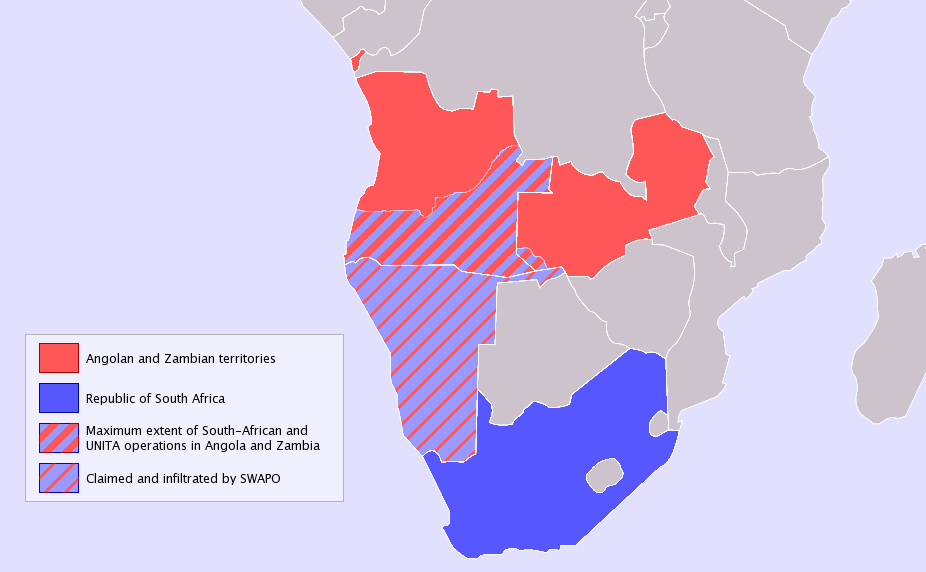
Territories involved during the “Border Wars”
At that time, France was, after Great Britain, the main provider of weaponry and armored vehicles, starting with the Panhard AML armoured car. During all the operations led against the SWAPO rebels (South-West Africa People’s Organization), the armored cars inspired a local production version, the Eland Mk.7, and quick-started the production of other vehicles. The Centurion became the only tank in service with the SADF,whereas wheeled armored vehicles were developed and became an integral part of the SADF specificity. The dry and rather flat terrain where these vehicles fought was, of course, a favoring factor.
With the independence of Angola, SADF forces assisted with its auxiliary South West African Territorial Force, were it found itself at war with the UNITA rebels in Angola in the late 1960s and against the Cuban troops that supported them. Due to the lack of manpower, the provisional 7 SA Division, along with the 17, 18 and 19th Brigades, were short lived, from 1965 to 1967, when they were replaced by the Army Task Force and 16th Brigade. In the 1970s, the segregation policy was lifted from recruitment, but black persons were confined to auxiliary duties and never saw the front line.
In 1973, the 7th SA Infantry Battalion, 8th SA Infantry Battalion and 11th Commando were created. The next year, the army was reorganized into two divisions under a corps headquarters and reorganized in the 1980s to keep a strong conventional core (Citizens Force, with the 7th and 8th Divisions) while being capable at the same time of flexible counter-insurgency operations (with nine territorial commands). The armored units benefited from a series of upgrades performed on the Centurion, the “SKOKIAAN” program in 1968 (there was an ongoing UN embargo at the time, that prevented spare parts and upgrades from getting through), with the fitting of a 372 kW (500 hp) V12, Detroit diesel, and in 1973 a Continental fuel-injection engine and a three-speed Allison semi-automatic transmission performed at Pretoria.
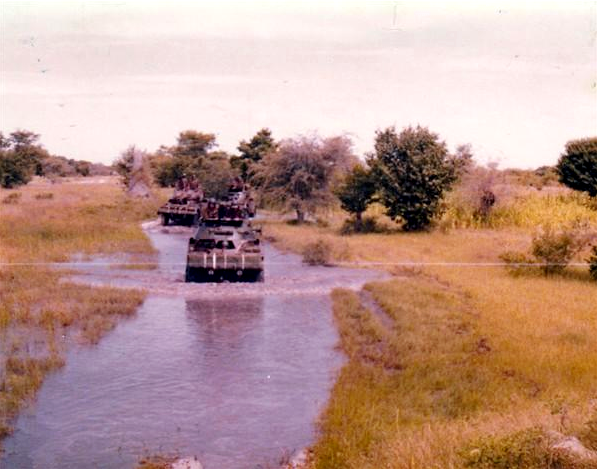
A SANDF convoy in Namibia
However, only 11 were so converted and nine maintained in operation on the Angolan border in 1976, but the project was terminated due to their lack of range. Later, the Semels project was launched, followed by the Olifant Mark 1A program and the even more ambitious Mark 1B ,with the help of Israel. The 7th Division, (HQ Johannesburg) comprised the 71st, 72nd, 73rd Motorized Brigades and division troops, whereas the 8 SA Armoured Division (HQ Durban) had the 81, 82, 83rd armored and motorized brigades and division troops.
Cuito Cuanavale (1987-88)
This small town of Angola found itself in the eye of the storm, and largely decided the fate of the whole campaign. This was not an isolated battle, bur a whole series of actions fought between September 1987 and March 1988, seven month in total. It was the story of a major SANDF offensive from the south, with local support from the UNITA (both backed by the CIA) against the MPLA (FAPLA), SWAPO (PLAN), ANC (MK) which were massively supported by Cuba (FAR), itself backed by the USSR. This will be the object of a full development.
During the border wars, SANDF forces captured a large array of Soviet-built Angolan/Cuban vehicles: T-34/85s, T-54s, T-72Ms, BMP-1s, MT-LBs with SA-13 “GOPHER” SAMs, BTR-152s and BTR-60s. Contrary to Israel, these were displayed as “spoils of war”, but never reused in active service. Angola in particular was an ideal battleground to compare Soviet equipment with the western one used by SANDF forces. The overall result on the whole, especially after the Cuito Cuinavale battle, was not especially favourable to SANDF and still open to debate. During the Battle of Longa River, SADF 61 Mechanized Battalion was found itself opposing FAPLA’s 16th, 21st (both light infantry), 47th (armored) and 59th (mechanized) brigades, which had about 6000 men and 80 tanks and backed by Cuban MiG-23s tailored for ground attacks.
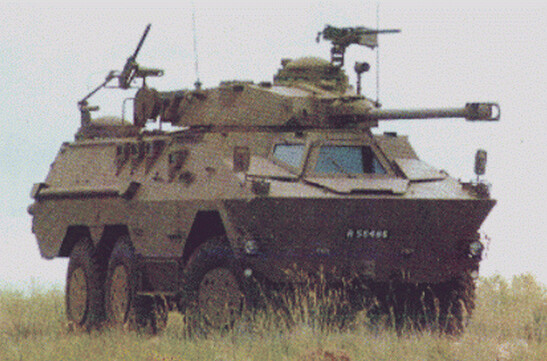
A new addition to the SANDF, the wheeled ICV Ratel-90 is armed with a 90 mm (3.54 in) gun inherited from the Eland-90, and was quite successful against T-54/55s.
The UNITA units opposing them were the 3rd Regular, 5th Regular, 13th Semi-Regular and 275th Special Forces Battalions backed by SANDF. Between the 9th of September and 7th of October, the FAPLA failed to cross the river, suffering heavy losses of 3000 men along with 61 tanks, 83 armored vehicles and 20 rocket launchers. In the aftermath, the SADF committed the armored might of the 4th SA Infantry Battalion in the counter-offensive which was successful in some measure, before the terrain and season halted a full exploitation of Operation Moduler.
In November, the SADF launched Operation Hooper, meant to corner and destroy three FLAPLA units left from the previous battles near the Cuito River. For the Cubans, the situation was so critical massive reinforcements arrived, with 15,000 elite troops, around 200 technicians, advisers, officers, special forces, plus tanks and new planes. It seemed the whole Cuban army was shipped and deployed in Angola to relieve the besieged garrison at Cuito Cuanavale. At the same time, a UN resolution condemned the SADF intervention and forces were reduced to 2000 men and 24 tanks, mostly Olifant Mk.1As. The attack started on 3 January 1988 with artillery. A second offensive occurred on 14 February, but despite inflicting heavy losses, SADF and UNITA did not secure their objectives. Operation Packer started with the newly created 82 Mechanized Brigade on 23 March, and bogged in a minefield while UNITA took heavy losses.
A leftover BTR-60PB in Angola.
The assault was stopped due to mounting Cuban artillery fire and air attacks. Operation Displace took place with a reduced SADF force in the Tumpo region, in order to try to save UNITA from a FAPLA advance. Artillery pounding was resumed until the end of August, but SADF forces were retired. The SADF deployed its ageing Elands 90, Olifants and Ratels of all versions, plus Buffel and Casspir MPVs, which were particularly efficient at safely carrying troops on mine-infested terrain. Many postwar engagement report of encounters with the T-34/85, T-54B, T-55, T-62, PT-76 were duly noted, as well as weaknesses in the BTR-40, BTR-152, BTR-50, BTR-60PB, BRDM-2, BMP-1 and MT-LB, among which many were captured and studied. In particular, the capture of a highly sophisticated SA-8 soviet anti-aircraft missile system attracted NATO’s experts.
1994 reforms
In 1990-91, the Army was reconstituted with three divisions, the 7th (Johannesburg), 8th (Durban) and 9th (Cape Town), later renamed 73rd, 74th and 75th Brigades when amalgamated into the 7th South African Division on 1 April 1997. The latter was disbanded on 1 April 1999 and the units were reorganized into “type” formation force structure. These followed the Deloitte and Touche recommendations, allowing the army to be more cost-efficient. At the same time, “silo” style formations for armor, infantry, artillery, and engineers were implemented. At the same time, various changes hit the military hierarchy inherited from the Apartheid, powered by a certain mistrust by the new Mandela government. These well-awaited reforms also ended segregation and implemented racial quotas. Despite budget cuts, the army started to change its image by actively participating in peace-keeping missions, with UNMIS (Sudan), ONUB (Burundi), MONUSCO (Congo), with interventions also in Lesotho, the Comoros, Rwanda, Ivory Coast or the Central African Republic and Uganda.
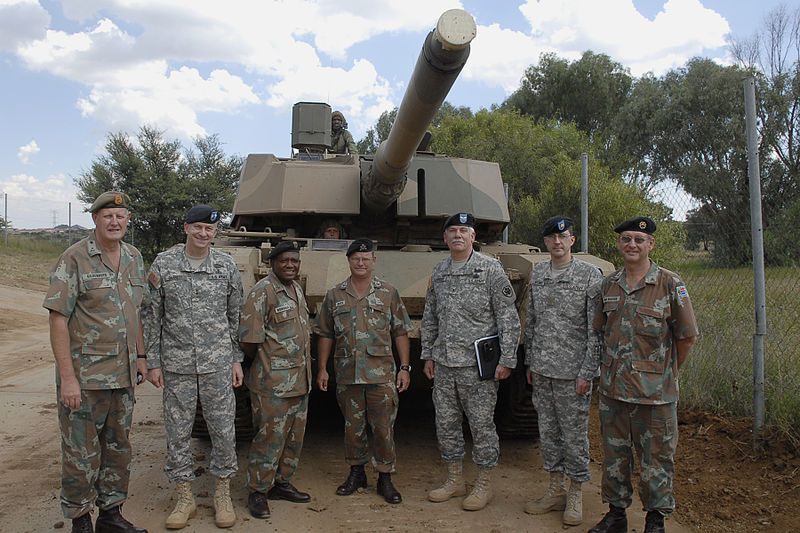
US Army commander visit SANDF at Bloemfontain Military School (behind an Olifant Mk.1b).
SANDF today
While the Army is modernized and reorganized, it faces the new threat of international Islamic terrorism in nearby countries. In 2006 the ARMY VISION 2020 guidelines document was published, returning to a planned division based structure with two divisions and a special operations brigade plus a work regiment. These steered away from the Deloitte and Touche inspired organization. One of the latest intervention was in 2013 with the United Nations Force Intervention Brigade deployed in Eastern Democratic Republic of the Congo, with a UN mandate. Crisis response also imposed its participation in the African Standby Force as part of the Southern African Development Community (SADC).
Links
The SA army on Wikipedia
SADF equipment on Wikipedia
Official blog of the DoD (Dept. of Defence)
Official website
SA Armour Museum
SAAR armour museum
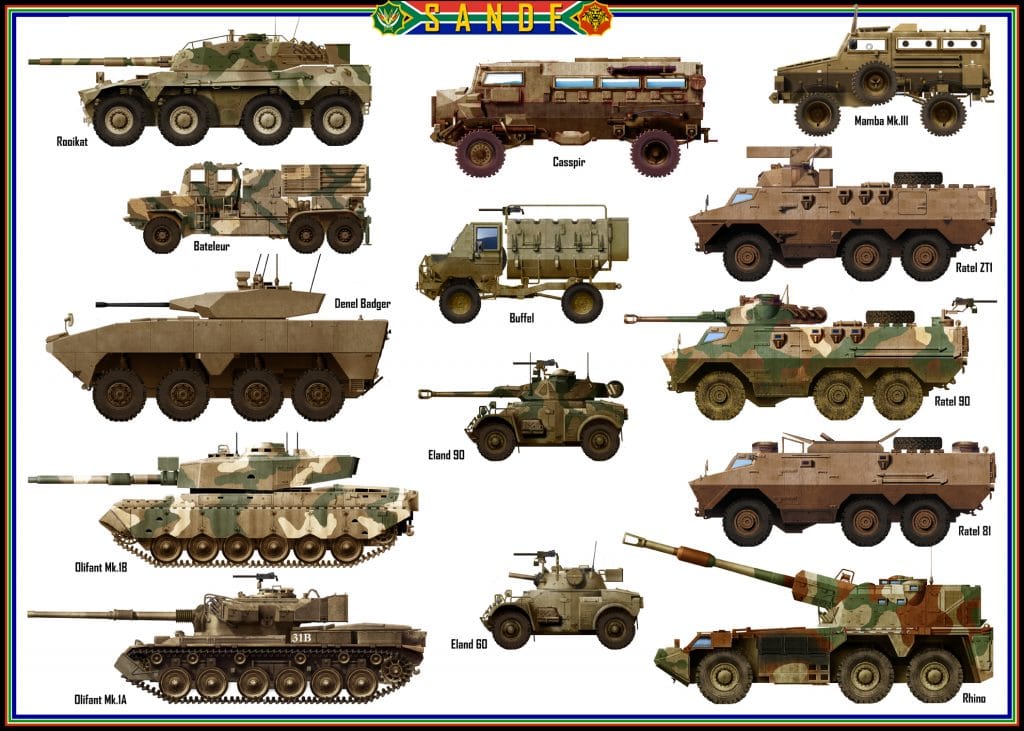
Want to support us and see more posters ? Have this one on your wall ! 😉
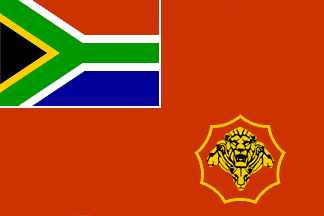
Official SANDF flag.
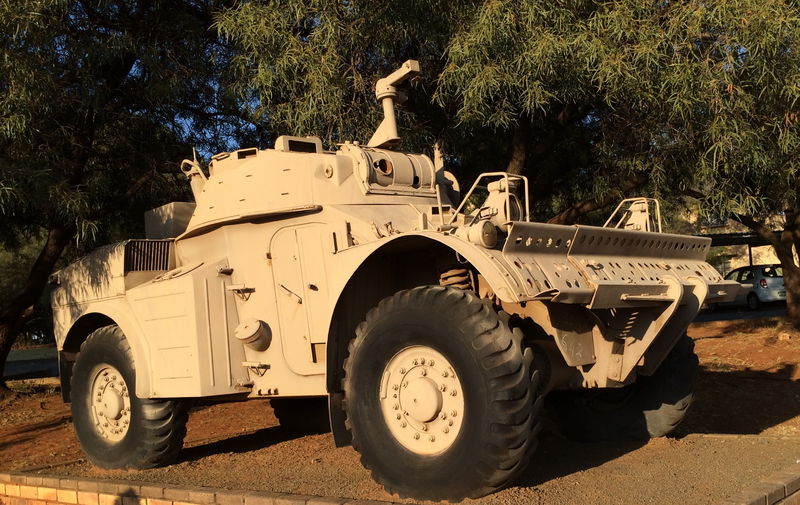
Eland 60, the mortar-carrier version (now deactivated)
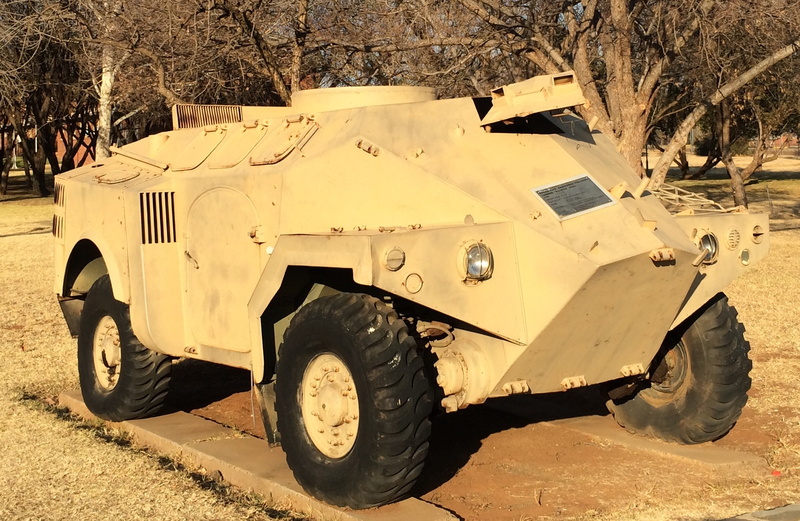
SADF Bosbok APC, one of the three prototypes of the locally-built amphibious M3 Panhard by Sandrock Austral (Pty) Ltd.
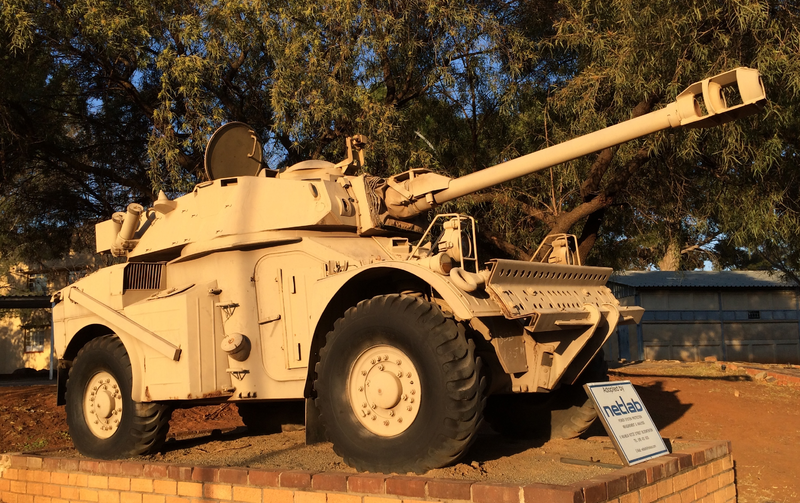
Eland Mark 7 or Eland 90 (1200 built, widely exported in Africa), quite successful against Angolan armor.
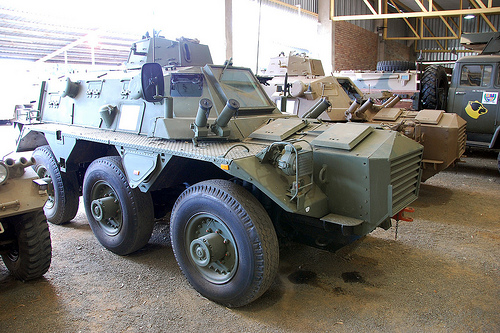
Saracen Mark 3. In 1953, South Africa purchased 10 Saracen Mk.1s for evaluation, followed by an order of 270 in 1954, arriving in 1956. They were placed in storage or used for training. 8 were allocated to the South African Police. All were withdrawn from service in 1975. A refurbishing was performed by the Railway Workshop, Uitenhage in 1979-1981. In service until 1991. – Source: Phozon on Flickr
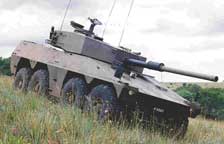
APFB wheeled tank prototype
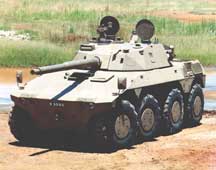
Class 2B RSA (Rooikat) wheeled tank destroyer prototype
Rooikats in an exercise (video documentary extract)
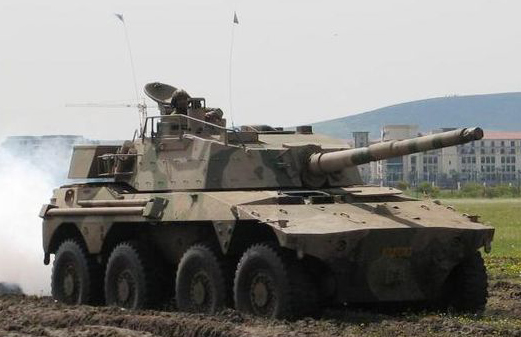
Rooikat wheeled tank destroyer (1976). With a long history of development, this wheeled tank was to replace the Eland Mark 7 and incorporated all lessons learnt from the Angolan war. It was produced only from 1989, when the war was over. 240 are in service today.
Olifant Mark 2. A long history of development and modification with the modified Mark 1a, then the rebuilt Mark 1B and modernized Mark 2. The Olifant is today’s SADF MBT in service, with 227 vehicles.
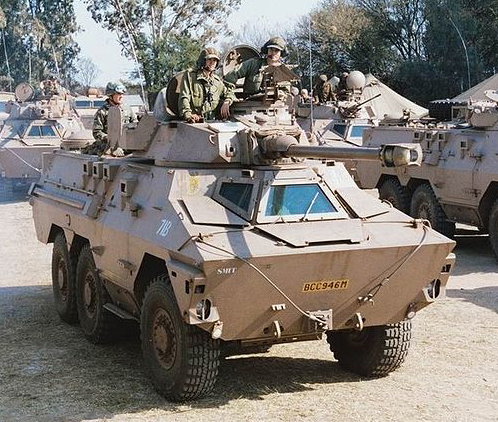
Ratel 90 IFV (1968). This vehicle, 1200+ of which were produced from 1974, was to be the main SADF wheeled APC and was declined into many variants. 434 are in service today, with 666 in reserve plus 16 ZT3 (36 in reserve).
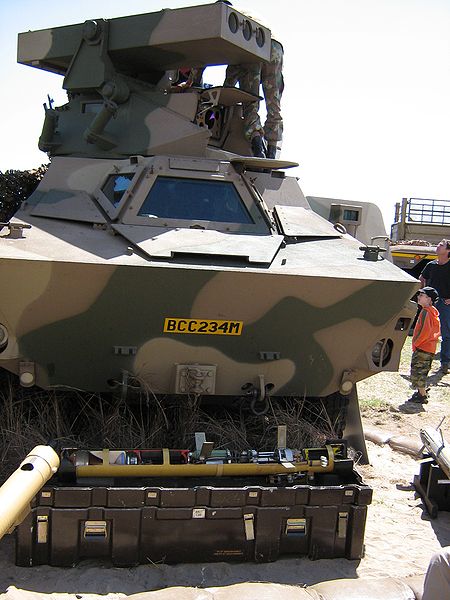
Ratel ZT3 with ATGM launchers at an army exhibit.
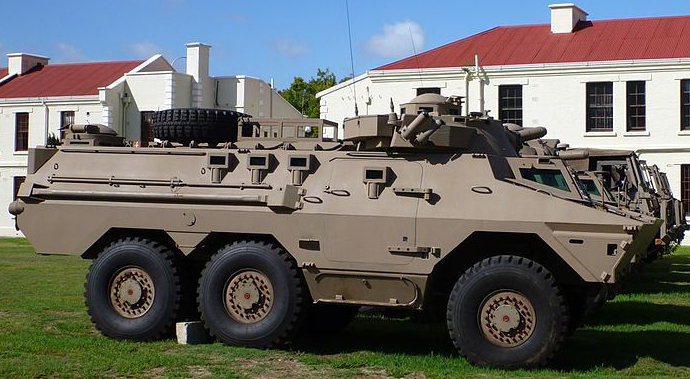
Ratel 20 at the Cape Town Castle
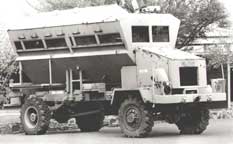
Hippo Mark 1 MRAP.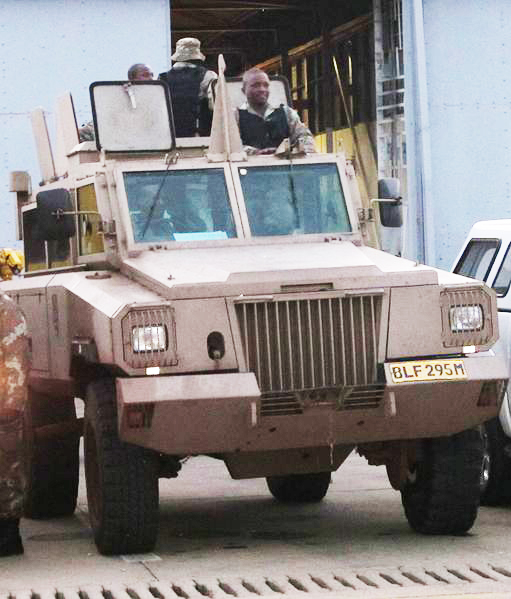
Mamba Mark 3 APC-MRV (440 in service today)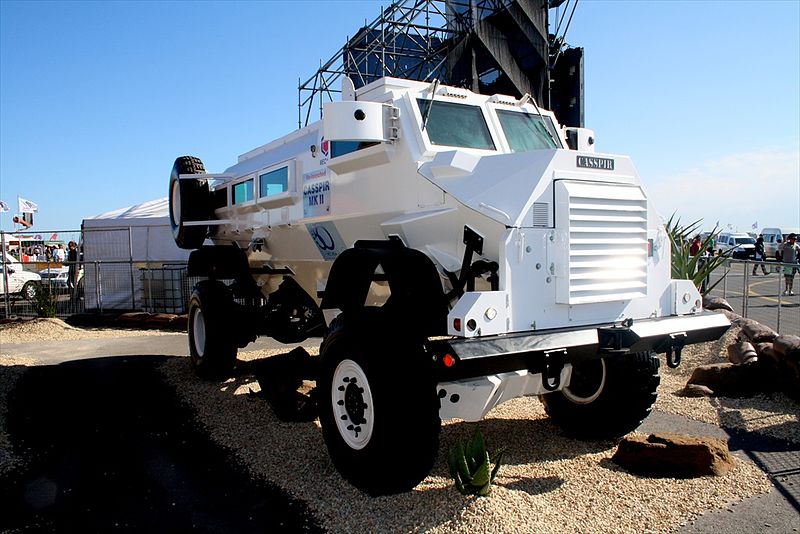
Casspir Mark 2 APC/MRAP (370 in service today)
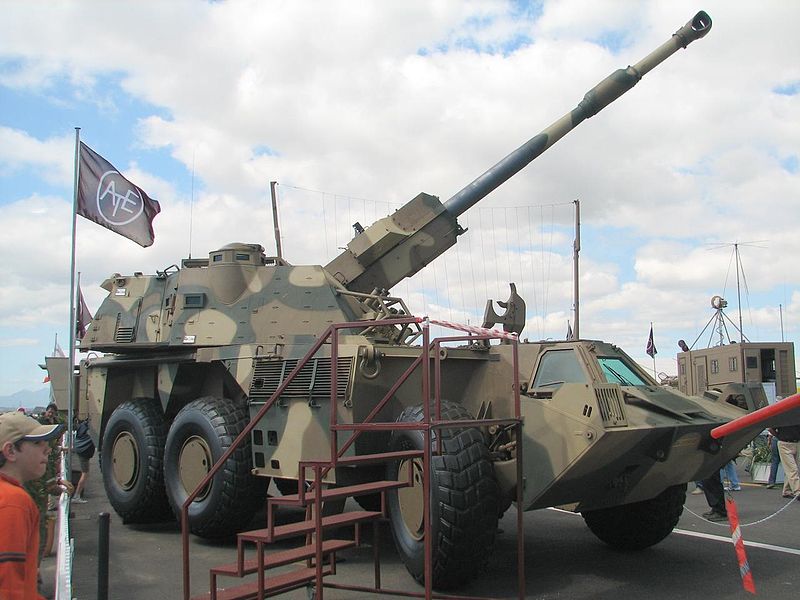
Denel G6 Renoster howitzer fast carrier (1987). 43 in service today.<
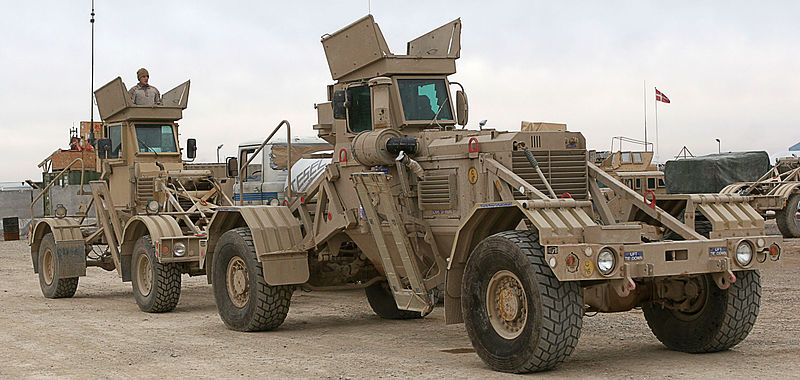
Husky tactical mine clearing system
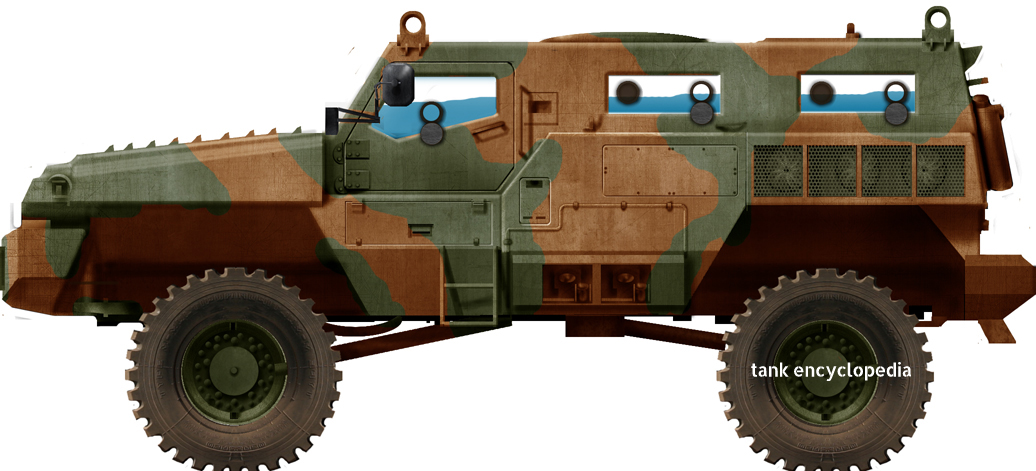
SANDF Paramount Marauder.
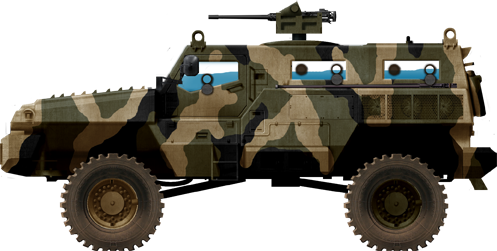
Azeri (Azerbaijan) Marauder, armed with a cal.50 RWS.
South African Armoured Fighting Vehicles: A History of Innovation and Excellence, 1960-2020 (Africa@War)
During the Cold War, Africa became a prime location for proxy wars between the East and the West. Against the backdrop of a steep rise in liberation movements backed by Eastern Bloc communist countries such as Cuba and the Soviet Union, southern Africa saw one of the most intense wars ever fought on the continent.
Subjected to international sanctions due to its policies of racial segregation, known as Apartheid, South Africa was cut off from sources of major arms systems from 1977. Over the following years, the country became involved in the war in Angola, which gradually grew in ferocity and converted into a conventional war. With the available equipment being ill-suited to the local, hot, dry and dusty climate, and confronted with the omnipresent threat of land mines, the South Africans began researching and developing their own, often groundbreaking and innovative weapon systems.
The results were designs for some of the most robust armored vehicles produced anywhere in the world for their time, and highly influential for further development in multiple fields ever since. Decades later, the lineage of some of the vehicles in question can still be seen on many of battlefields around the world, especially those riddled by land mines and so-called improvised explosive devices.
South African Armoured Fighting Vehicles takes an in-depth look at 13 iconic South African armored vehicles. The development of each vehicle is rolled out in the form of a breakdown of their main features, layout and design, equipment, capabilities, variants and service experiences. Illustrated by over 100 authentic photographs and more than two dozen custom-drawn color profiles, this volume provides an exclusive and indispensable source of reference.
Cold War Tanks
 Argentina
Argentina
 Austria
Austria
 Belgium
Belgium
 Brazil
Brazil
 Bulgaria
Bulgaria
 Canada
Canada
 China
China
 Egypt
Egypt
 Finland
Finland
 France
France
 Greece
Greece
 India
India
 Iran
Iran
 Iraq
Iraq
 Ireland
Ireland
 Israel
Israel
 Italy
Italy
 Japan
Japan
 New Zealand
New Zealand
 North Korea
North Korea
 Poland
Poland
 Portugal
Portugal
 Romania
Romania
 South Africa
South Africa
 South Korea
South Korea
 Spain
Spain
 Sweden
Sweden
 Switzerland
Switzerland
![]() Thailand
Thailand
 The Netherlands
The Netherlands
 United Kingdom
United Kingdom
 USA
USA
 USSR
USSR
 West Germany
West Germany
 Yugoslavia
Yugoslavia

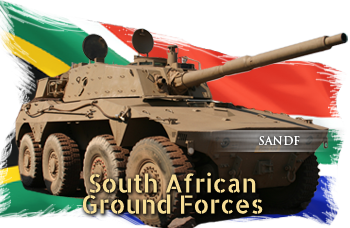
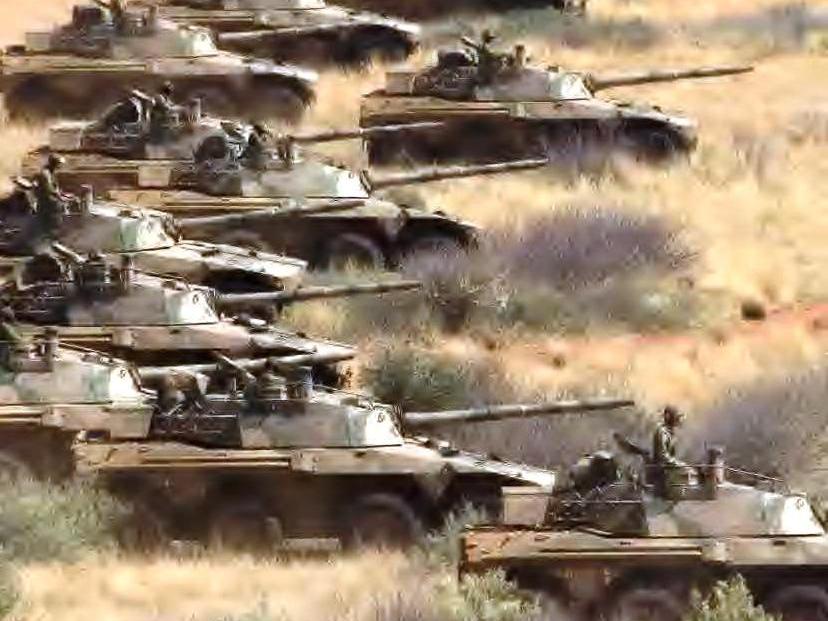
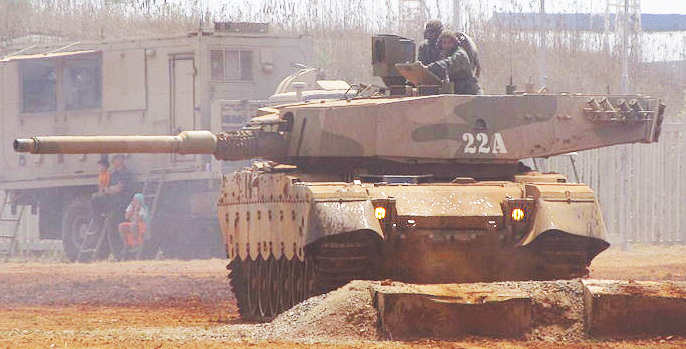
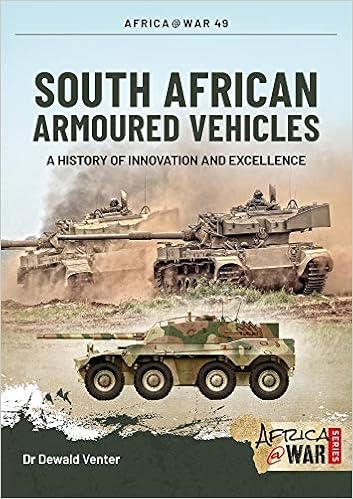
24 replies on “Republic of South Africa”
Your summary of SADF actions, in particular Cuito Carnivale appears to be somewhat one-sided. May I suggest that you read more literature from the SADF point of view. The SADF was not trying to take over Cuito Carnivale – that would have been an unwise move too far. It was trying to block the Angolan/Cuban/Soviet move south across the river. By the SADF blowing the bridge there it prevented the Angolan front from moving any further. South Africa never intended to take over Angola, but stop the terrorist incursions into SWA by communist backed SWAPO who were being protected by Angolan forces.
Greetings Chris. I recently joined the TE team and will unpack the entire section in more detail later this year. I’m still busy with “Eye of the Firestorm” and “Mobility Conquers”.
Particulary the part 3000-4000 wounded??? Really? SADF only had about 3000 men in total involved in this “battle” – so all the SADF soldiers were wounded??
Who cares, the apartheid regime is a dodo now, and that was the strategic intention of the progressive and revolutionary forces lead by the late comrade Fidel.
http://sadf.info/SWATF%20Operations.html
Hello, I see you used my (uncredited) Saracen image…You can find more images of SADF / SANDF vehicles here:
https://www.flickr.com/photos/29988850@N00/page14
Source added
Hi, I am looking forward to seeing the RG range of vehicles, specifically the RG 31 Nyala.
I`ll be tackling the Mamba soon.
Please note, the photo of the US Army Commander visiting School of Armour was taken with an Olifant MK2 MBT. The Mk1B was never taken into service. You can easily identify the Mk2 by the large Commander’s Observation Platform (the square box on top of the turret) and the different Cupola.
Keep up the good work!
The MK1B was taken into service but yes you are correct that is the MK2
Good day.
i stumbled onto the website after searching the web for information on the Humber Armoured Car. My initial thought was that this looks very interesting until i opened the South African section.
At risk to sound very negative the information as reflected in the section which has reference to the so called Cuito Cuanavale (1987-88) is really inaccurate and dis-concerning. Some wild and inaccurate statements really only shows that the research that was done to write this piece was lacking in accuracy as well as facts and are portraying many misconceptions that have been shown to be completely devoid of the truth. There are many credible books and articles that have been written about this very subject , and it seems that none of these were studied in order to give a balanced account of the real happenings and outcomes of the different operations of the time. As a web site who is using the word Encyclopedia one would expect much better. Some glaring mistakes and misconceptions are ” The battle itself only counted for eight days, from 12 to 20 January, and the Cubans and FLAPLA were victorious” this is utter hogwash , firstly Cuito was never the objective of any “battle” or attack. There were a series of attacks on various brigades that were deployed in the Chambinga highlands and the aim was to force these units over the Cuito river onto the west bank. GO READ THE THE VARIOUS BOOKS these are more than clear as to what happened. Secondly ” SANDF lost an official 31 dead and 3000-4000 wounded, plus 8000 wounded and 3000 dead from UNITA.” These figures are grossly over exaggerated, 3000 to 4000 wounded as above the SADF did not even have so many deployed at any time. The figures of Unita casualties are also ridiculous. There were no official records of their losses. So i would at least mention that in the piece.These are only some examples. As member who was actually part of these historic actions one would expect some objective and accurate information to be distributed and not half truths and false propaganda.
Thank you for your comment, Mr. Lotter.
We appreciate that you pointed out some of the more jarring inaccuracies.
As it happens, this page was written over four years ago and clearly not by a South Africa expert. Many of our older articles are in the same boat.
However, I can tell you that we now have a South Africa expert on our team who has written some new articles for us, and will hopefully work through the older ones.
-TE Editor
Dagse Werner.
Sodra ek klaar is met die Eland, Buffel en TTD sal ek Cuito aanpak.
Wow – Sorry but what a poor article full of contradictions and inaccuracies. You mention that the SANDF were pushed back in retreat….strange that a force fleeing in the face of a rampant numerically superior enemy had the ability to destroy or capture so much enemy equipment? Including the first ever captured soviet SA8 vehicle mounted surface to air missile that had the Wests/ NATO experts secretly visiting Hamands kraal where it was kept for evaluation. (A second captured SA8 vehicle was later used by RECCE operators to shoot down a high altitude Soviet heavy transport aircraft, resulting in the loss of war materials and 2 Cuban advisers). 2 Angolan/ Cuban Mig 23’s were shot down with SAMs (suspected SA7’s) on October 28th. The pilots ejected safely and were captured by UNITA and displayed to the world press. They were Lt. Col. Manuel Rocas Garcias and Capt. Ramos Kassadas. The result of this and another Mig shot down by a UNITA Stinger days later (310 units supplied by USA) was that Mig 23’s were ordered to stay above 15 000 feet. Thus the Mig ground attack threat became largely insignificant, and it was the SAAF that wanted to avoid aerial engagements. Russian Hind and Hip helicopters had become more of a ground threat and resupply problem over the Cuito Cuanavale operations area , and the South Africans devised yet another original method to combat this. A strategy was devised to use 2 pairs of Impala trainer jets to engage the slower helicopters. On 27th September SADF radar tracked the take off of 2 Mi-24 Hinds and guided Impalas to intercept at 2000ft, the action was successful with 2 Mi-24s shot down, captured on the Impalas 20mm gun camera so was verified – not just some propaganda statement. 2 days later on 29th September SADF radar tracked 4 helicopters taking off from Cuito heading for the war zone. Again pairs if Impalas were vectored to intercept at 3000ft, engaged and shot down 2 x Mi-24 Hind gun ships and 2 x Mi-17 Hip transports that had several high ranking soviet and cuban advisers onboard . The Cuban advisers attributed this to Stinger missiles/ SAMs and after the loss of 6 high value helicopters and crew in just a few days they immediately stopped any further helicopter flights within 50km of the battle line. So you comment regarding SADF ground forces could not operate without the SAAF air cover/ air superiority is not accurate or factual. Mig Pilots were ordered to stay high and out of missile reach which largely watered down their combat effectiveness to limiting direct SAAF mirage actions on the front line.
As Mr Lotter (who I suspect was with 61mech for the event) pointed out, taking the town of Cuito was not the operation objective. The town was the closest Mig runway which allowed the Migs 1 hour loiter over the battle field a few minutes flight away, vs the SAAF mirages which only had 5 minutes loiter over target due to the 500km distance from their base at Grootfontein. One objective was to stand off the town and bombard the defenses and crater the runway, and thus force the Cubans to operate from the next closest runway several hundred kilometers further. This would reduce the Migs loiter time overhead and likewise provide more warning time from when Migs took off for the Lomba area. This objective was met as the South Africans later used their long ranging G5 cannons to obliterate the runways at Cuito and Menongue. The second objective was to halt the Angolan/Cuban forces offensive to cross the lomba in large numbers and engage with UNITA. Thus the G5’s and MRL’s were used along with the Ratels of 61 Mech. In the context of this battle and the overall Cuban/ Angolan war effort – the soviet Commander-in-chief in Angola, General Pyotr Gusev admitted in his published memoirs that “3rd October the Angolans and Cubans suffered a complete and devastating defeat” which shattered the 47th Brigade. Of note was the first operational deployment of the Ratel ZT3 5000m TOW which now gave the faster more nimble Ratels true single shot tank killing power. One ZT3 shot out 2 soviet MBTs with a missle to each in quick succession. The SADF now had a bonified battle tested tank killer, and thus could face and neutralize the Angolan/Cuban tank threat. (You could probably purchase 5 or 6 ZT3’s for the cost of 1 MBT, and they were made in SA and could be delivered quickly to Angola vs MBT Tanks shipping from Russia, so soon the numerical tank advantage would no longer count in favor of Angola) With the SADF G5 & G6 155mm cannons, The Valkerie MRL, the new ZT3, and the just released Rooikat South Africa were well prepared with this new generation of weapons to continue the fight and destroy more Angolans. Add to that the ROOIVALK attack helicopter that would have been available months later, and it is clear to see why Fidel Castro decided to rather opt for a strategic stalemate and agreed withdrawal of his forces. Cubans I have met refer to Angola as Fidel Castros Vietnaam, a slow war that was bleeding his nation and killing its soldiers in a far off land.
Fidel Castro sent his brother – Defence Minister Raul Castro – along with the 15 000 Cubans you mention. Not to engage directly against the SA forces in a war the Angolans had already lost, rather to to bolster the Cuban bargaining position at the proposed peace talks . Fidels own brother was quoted in international press with this recorded comment “I have been sent to a lost war so that I will be blamed for the defeat.”
Next was the shocking imprisonment and death sentence in June 1989, imposed on General Arnaldo Ochoa Sanchez, chief of the Cuban military mission in Angola from November 1987 to January 1989. Is the treatment of a victorious General returning after “Winning a WAR” ??? Or Fidel castro’s attempt to hide the disappointment and shame of losing to what should on paper be an inferior force?
As a “Tank Encyclopedia” if you are going to comment on the politics and wars, please can you get the facts correct. The South Africans have well documented Mig shootings from their gun and missile camera’s and video of ZT3 missiles shooting out Soviet tanks at the battle of Lomba (not Longa). Angolan/ Cuban losses were also verified or recorded on their side, for example Soviet Lieutenent-Colonel Igor Zhdarkin made his diary notes public for that event keeping track of the loss of his countries supplied equipment, which read as follows: major equipment loss attached to 47 Brigade 18 Tanks, 20 armoured troop carriers, 4 D-30 122mm guns, 3 BM-21 rocket launches, 4 Osa – AK SA8 anti aircraft mobile rocket launches, 1 P-19 mobile radar station. Of note is that these figures closely tally with information from the SADF.
Can I suggest you reference the books “Ratels on The Lomba – Leopold Scholtz” and “Eye of the Firestorm” & “The SADF in the border war 1966 – 1689” by the very knowledgeable Maj General Roland de Vries.
Other than that I think this is a great website and appreciate the detail and content you are trying to add.
Hello Peter!
Our South African writer is already working on a separate Battle of Cuito article, which will lead to the removal of the problematic paragraphs from this page.
All the best!
Dear Sirs,
Thank you for yet another excellent article! I am very interested in the African Independence wars of the Late Cold-War period, and as such I’m curious if you ever intend to make articles or pages on the Rhodesian Armoured Corps? They utilized a whole host of unique indigenous vehicles, and I think research into this field would be a great addition to your website. As of now, few military sites have explored this untapped region of armoured history. Additionally, if possible I’d be happy to assist with the creation of any RAC page should one be made. Thank you for your time and your efforts in the field of armour history.
Sincerely,
Bernard
Hello Bernard!
Thank you for your offer of help! Would you be willing to write articles on these fascinating vehicles? We will handle the illustrations.
All the best!
Hello Bernard
Indeed there were a few Rhodesian vehicles that deserve depiction here; Well that’s a question to ask to our South African specialist, Dewald Venter…
Cheers,
Why is the South African Army flag labeled “Offical SANDF Flag”?
May I make the suggestion that in your Wheeled Vehicle section you move the Bateleur FV2 to Artillery vehicles, were it belongs and retitle the section: Wheeled AFVs (Armoured Fighting Vehicle) and IFVs (Infantry Fighting Vehicle), as except for the Bateleur FV2 that is what is in that section.
Moved the Bateleur. Thank you.
I see and the title? All the APCs and Artillery vehicles are technically wheeled vehicles, this is why I recommend changing the title of the Wheeled Vehicle section.
With regards to the photo of the Rooikat, the text below it is incorrect. The Rooikat is not a tank destroyer. It is an armoured reconnaissance vehicle, with it’s primary role being that of aggressive reconnaissance. The role of tank destroyer is fulled by the Ratel ZT-3.